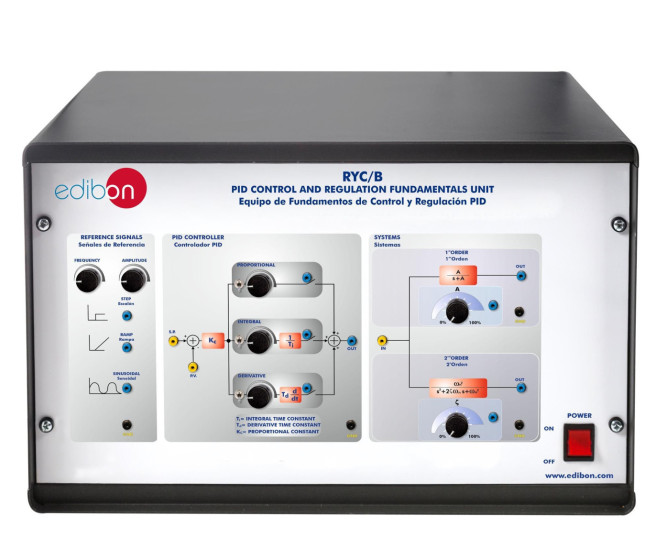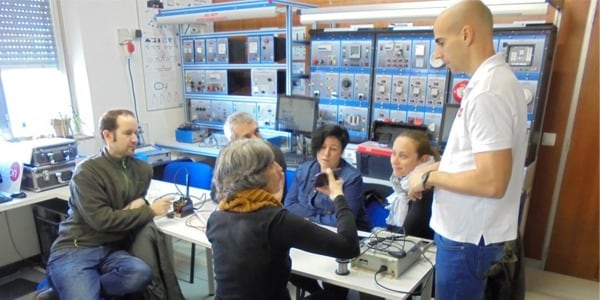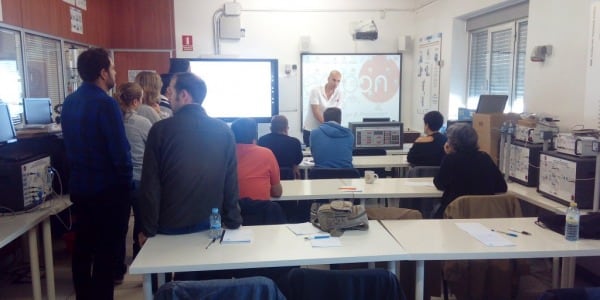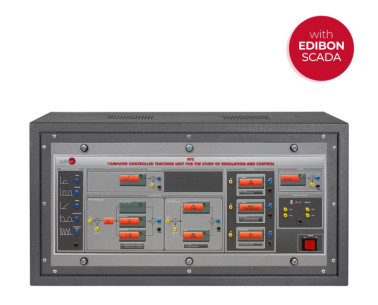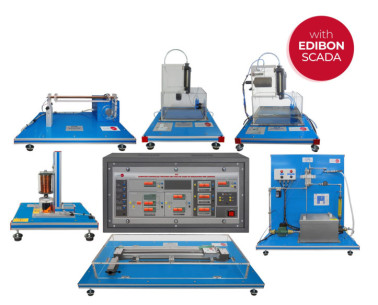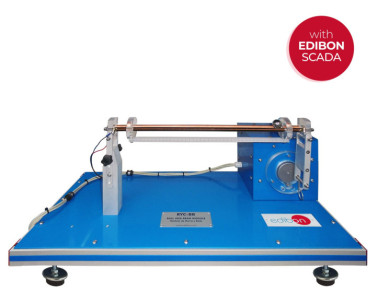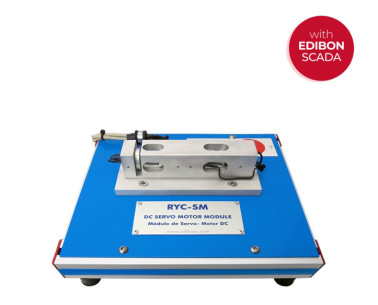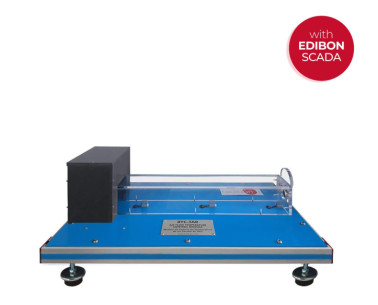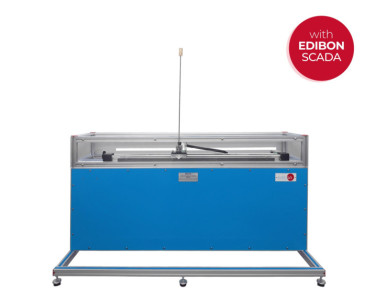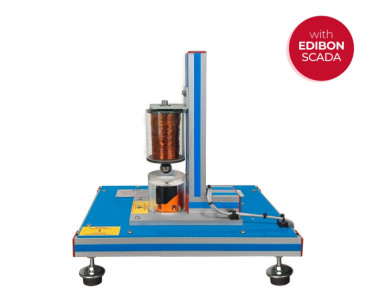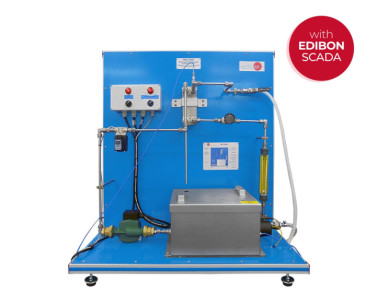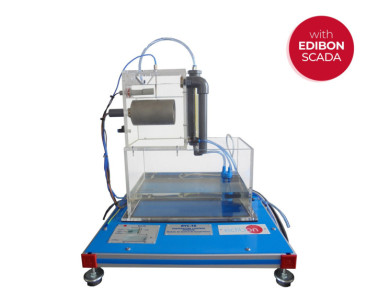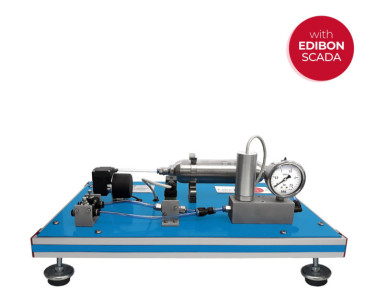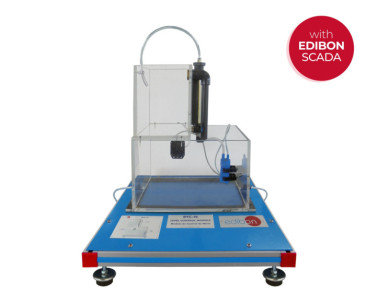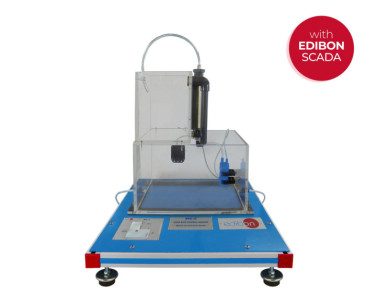RYC/B PID Control and Regulation Fundamentals Unit
INNOVATIVE SYSTEMS
The PID Control and Regulation Fundamentals Unit, "RYC/B", developed by EDIBON, allows users to practically and comprehensively study the essential principles of automatic control, using first- and second-order models, and applying various types of controllers, including classical PID as well as lead and lag compensators.
Laboratories
RELATED NEWS
General Description
The regulation of dynamic systems is a fundamental component of engineering, as it allows process variables to be maintained within desired limits despite external disturbances or internal changes. To achieve this, control strategies such as the PID controller are used, whose effectiveness depends on proper parameter tuning and a deep understanding of the system’s behavior.
The PID Control and Regulation Fundamentals Unit, "RYC/B", designed by EDIBON, enables users to study the core principles of automatic control in a practical and accessible way, focusing on first- and second-order systems. Thanks to its modular design, this unit facilitates detailed analysis of dynamic system responses to different input signals, as well as hands-on implementation of proportional, integral, and derivative control actions.
The "RYC/B" is divided into three main sections:
- A reference signal generator, which provides step, ramp, and sine wave inputs, all adjustable in amplitude and frequency.
- A configurable PID controller, which allows users to manually adjust the key control parameters proportional gain (Kp), integral time (Ti), and derivative time (Td) with optimized ranges for analyzing each control action individually or in combination.
- A set of dynamic systems, simulating real-world first- and second-order process behavior, enabling evaluation of system responses under different control configurations.
The unit also includes a power supply, protection fuses, and a functional block diagram displayed on the front panel to help users visualize and understand the control process.
It comes complete with all necessary cables and accessories, along with a comprehensive set of manuals covering installation, safety, maintenance, and a detailed practical guide.
As an additional element for the correct display of the signals and their response, it is recommended to use the 70 MHz Dual-Channel Digital Oscilloscope, "MED87" (not included).
The "RYC/B" is an ideal solution for introducing technicians and future engineers to the fundamentals and analysis of control systems, offering a hands-on, real-world experience with essential concepts that form the backbone of modern automation.
Exercises and guided practices
GUIDED PRACTICAL EXERCISES INCLUDED IN THE MANUAL
- Response of a first order system in time domain. (Step-response).
- Response of a first order system in time domain. ((Ramp response).
- Response of a first order system in time domain. (Sinusoidalresponse).
- Response of a first order system in frequency domain. (Sinusoidalresponse).
- Response of a second order system in time domain. (Stepresponse).
- Response of a second order system in time domain. (Rampresponse).
- Response of a second order system in time domain. (Sinusoidalresponse).
- Response of a second order system in frequency domain. (Sinusoidal-response).
- Structure of a PID controller. (Proportional-Integrative-Derivative blocks).
- PID control of a first order system in open-loop.
- PID control of a second order system in open-loop.
- PID control of a first order system in closed- loop. (Mathematical tuning).
- PID control of a first order system in closed- loop. (Experimental tuning).
- PID control of a first order system in closed- loop. (Ziegler - Nichols tuning).
- PID control of a second order system in closed- loop. (Mathematical tuning).
- PID control of a second order system in closed- loop. (Experimental tuning).
- PID control of a second order system in closed- loop. (Ziegler - Nichols tuning).
SIMILAR UNITS AVAILABLE
SUPPLEMENTARY EQUIPMENT
Computer Controlled Modular Control and Regulation Unit
Computer Controlled Teaching Unit for the Study of Regulation and Control
PID Control and Regulation of a Ball and Beam System Unit
PID Control and Regulation of a DC Servomotor Unit
PID Temperature Control and Regulation of Air Flow Unit
PID Control and Regulation of an Inverted Pendulum Unit
PID Magnetic Levitation Control and Regulation Unit
PID Temperature Control and Regulation of Water Flow Unit
PID Temperature Control and Regulation Unit
PID Control and Regulation of Pressure Level Unit
PID Level Control and Regulation Unit
PID Flow Control and Regulation Unit
Quality
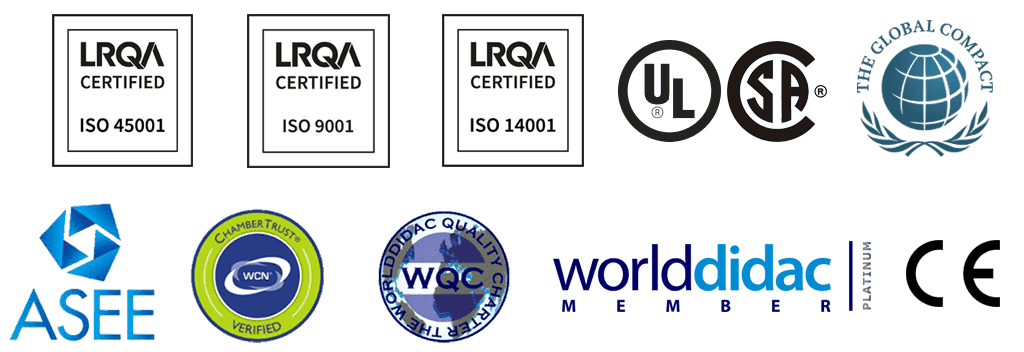
AFTER-SALES SERVICE

 Cookie preferences
Cookie preferences

